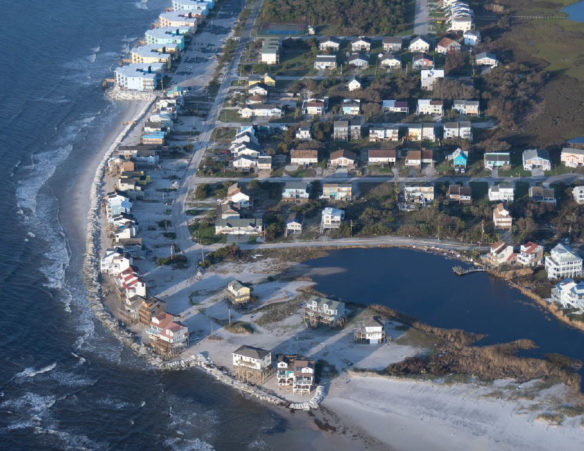
Photo courtesy of: “the Western Carolina University Program for the Study of Developed Shorelines
Excerpts;
A submerged breakwater system proposed to lessen beach erosion in South Carolina won’t pop up offshore anytime soon.
The idea — building an underwater barrier to slow down waves, and thus slow the flow of escaping sand — has coastal experts worried about disrupting the coastal flow of sand, nesting sea turtles and worsening water quality on the beach…
Read Full Article, Post and Courier (03-19-2020)
Seawalls: Ecological effects of coastal armoring in soft sediment environments; Science Daily (07-24-2017)
For nearly a century, America’s coasts — particularly those with large urban populations — have been armored with human made structures such as seawalls. These structures essentially draw a line in the sand that constrains the ability of the shoreline to respond to changes in sea level and other dynamic coastal processes…
Sea rise along South Carolina coast accelerating faster than realized, researcher says; Post And Courier (02-01-2019)
Within 50 years, the sea off Charleston will be rising about one inch every five years — twice as fast as it was rising about a century ago and one-third faster than it was in 2000…
Robert Young: Seaward of Common Sense? SC Needs to Put an End to Building on the Beach, The State (02-11-2015)
South Carolina’s beautiful beaches are a vital component of this state’s economy. Managing them wisely is critical to the health of the economy and to ensuring that state and local tax dollars are not wasted on futile efforts to protect homes needlessly placed in areas of obvious high hazard…
Rethinking Living Shorelines, By Orrin H. Pilkey, Rob Young, Norma Longo, and Andy Coburn;Program for the Study of Developed Shorelines / Western Carolina University, March 1, 2012, Nicholas School of the Environment, Duke University
In response to the detrimental environmental impacts caused by traditional erosion control structures, environmental groups, state and federal resource management agencies, now advocate an approach known as “Living Shorelines”that embraces the use of natural habitat elements such as indigenous vegetation, to stabilize and protect eroding shorelines.









